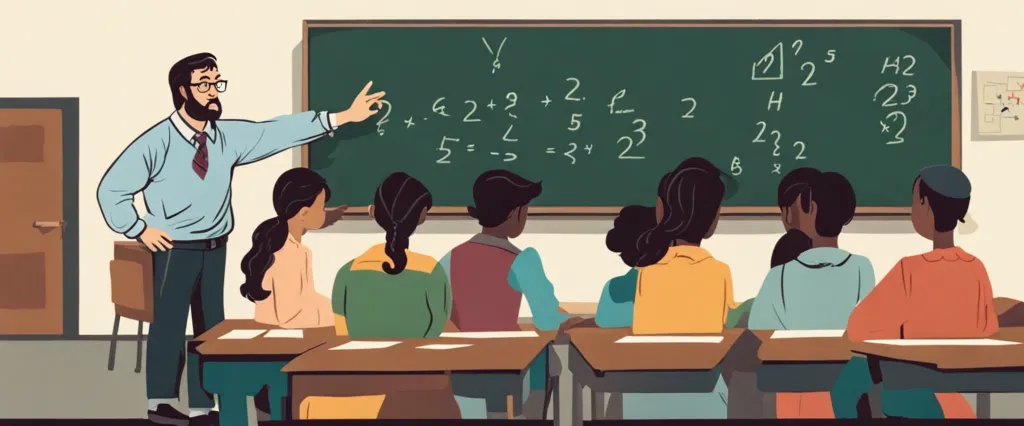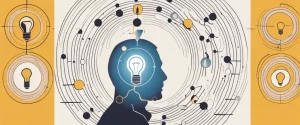——How Children Fail by John C. Holt & Liberated Parents Liberated Children by Adele Faber

In the world of education and parenting, numerous books have been written with the intention of enlightening readers on the art of child-rearing and the challenges faced by young learners. Two such influential works that have left an indelible impact on the field are “How Children Fail” by John C. Holt and “Liberated Parents Liberated Children” by Adele Faber. While they may differ in their approaches and perspectives, both authors present thought-provoking insights into the nature of education and the crucial role that parents play in their children’s lives. By examining these seminal works side by side, this comparative study aims to explore the ways in which Holt and Faber address the complexities of childhood development and provide valuable suggestions to foster a nurturing and empowering environment for children. By delving into their contrasting viewpoints and identifying common themes, this study seeks to shed light on the central notions and challenges faced by educators and parents alike, ultimately showcasing the broader implications these works hold within the ever-evolving landscape of child education and parenting.
Brief Summary of Two Books
How Children Fail by John C. Holt
How Children Fail” by John C. Holt is a groundbreaking educational book that challenges traditional teaching methods and explores the ways in which they can hinder children’s learning. Published in 1964, Holt draws from his experiences as a teacher to explain how the school system, by focusing on grades and performance rather than understanding and critical thinking, fails to nurture the innate curiosity and natural desire to learn in children.
Holt discusses his observations in the classroom, as he witnesses children who initially display enthusiasm and curiosity gradually become disengaged and discouraged. He argues that the rigid structures and strict adherence to textbook knowledge stifle creativity and independent thinking, causing children to see learning as a chore rather than a source of excitement.
The book also explores how students develop a fear of failure, heavily influenced by the grading system. Holt rejects the idea that failure is something to be ashamed of, asserting that it is an essential part of the learning process. Instead, he advocates for learning through experimentation and actively encourages children to make mistakes and learn from them.
Holt concludes by suggesting that parents and educators should adopt alternative teaching methods that focus on cultivating intrinsic motivation, providing opportunities for hands-on learning, and allowing children more independence and autonomy over their education. By doing so, he believes that children will not only regain their enthusiasm for learning but will also develop a deeper understanding and appreciation for knowledge.
“How Children Fail” challenges the traditional educational system by shedding light on its shortcomings and offering practical alternatives to create a more engaging and effective learning environment for children.
Liberated Parents Liberated Children by Adele Faber
Liberated Parents, Liberated Children” by Adele Faber is a guidebook for parents looking to create a healthy and harmonious relationship with their children. Faber emphasizes the importance of treating children with respect and understanding their needs and feelings. The book explores various strategies, such as active listening, problem-solving, and setting limits, to help parents communicate effectively and promote independence in their children. Faber also addresses common challenges such as discipline, screen time, and sibling rivalry, offering practical advice and real-life examples. Overall, “Liberated Parents, Liberated Children” provides a comprehensive approach to parenting that focuses on nurturing positive relationships and fostering a sense of autonomy and responsibility in children.
Comparison between Two Books

Similarities in Theory
Both “How Children Fail” by John C. Holt and “Liberated Parents Liberated Children” by Adele Faber delve into the theory of education and parenting styles, discussing similar principles and beliefs. Some of the similarities between the two books’ theories include:
1. Respect for children’s autonomy: Both Holt and Faber emphasize the importance of treating children as autonomous individuals. They believe that children should be granted independence and allowed to make choices, fostering self-discovery and personal growth.
2. Learning through experience: Both authors argue that children learn best through hands-on experiences rather than passive instruction. They advocate for an interactive and engaging learning environment that encourages curiosity, exploration, and experimentation.
3. The role of parents/teachers as facilitators: Holt and Faber suggest that parents and teachers should act as facilitators rather than authoritative figures. They propose a more collaborative approach where adults assist and guide children in their learning journey, providing support and resources when needed.
4. Emotional well-being: Both books emphasize the significance of emotional well-being in children’s overall development. Holt and Faber highlight the importance of building positive relationships, fostering empathy, and providing a nurturing environment that considers children’s emotional needs.
5. The negative impact of traditional educational approaches: Both authors critique traditional educational approaches that prioritize rote memorization, standardized testing, and rigid structures. They argue that these methods hinder children’s natural love for learning and limit their creativity and critical thinking abilities.
6. Open communication: Both books stress the importance of open and effective communication between parents/teachers and children. They advocate for active listening, empathy, and respectful dialogue as essential tools for understanding children’s needs and promoting healthy relationships.
Overall, these books share a similar theory that highlights the importance of respecting children’s autonomy, promoting experiential learning, facilitating rather than controlling, prioritizing emotional well-being, criticizing traditional educational methods, and fostering open communication.
Divergences in Theory
“How Children Fail” by John C. Holt and “Liberated Parents Liberated Children” by Adele Faber are two influential books that approach the topic of education and parenting from different perspectives. While both authors emphasize the importance of child-centered learning and the role of parents in their children’s development, they diverge in their theories regarding the nature of children and the educational system.
John C. Holt’s “How Children Fail” criticizes the conventional education system and its detrimental effects on children’s natural learning abilities. Holt’s theory centers around the belief that children are inherently curious and eager to learn, but the traditional educational practices stifle their innate abilities. He argues that the emphasis on grades, exams, and rigid curriculum leads to rote memorization and a fear of failure, which inhibits creativity and genuine learning. Holt advocates for a more organic and child-led approach to education, where teachers act as facilitators, and children are given the freedom to explore their interests and learn at their own pace.
On the other hand, Adele Faber’s “Liberated Parents Liberated Children” focuses on improving parent-child relationships through effective communication and understanding. Faber’s theory highlights the importance of fostering cooperation, empathy, and mutual respect between parents and children. She suggests that parents should provide their children with choices while setting clear boundaries, encouraging independence and self-discipline. Faber believes that by empowering children and involving them in decision-making processes, parents can nurture their confidence and emotional well-being.
Although both books emphasize the significance of child-centered approaches, the divergence lies in their theories regarding the nature of children and the role of the educational system. Holt primarily criticizes the education system and its impact on children’s learning abilities, while Faber focuses on empowering parents to build strong relationships with their children. Holt’s theory is more centered on educational reform, advocating for a radical shift in traditional classroom practices, whereas Faber’s theory is geared towards improving parent-child dynamics within the existing educational framework.
In summary, “How Children Fail” and “Liberated Parents Liberated Children” share a common emphasis on child-centered learning and the importance of parents in their children’s growth. However, they diverge in their theories regarding the nature of children and the role of the educational system, with Holt primarily targeting the education system itself and Faber concentrating on empowering parents to enhance their relationships with their children.

Conclusion
Both books, “How Children Fail” by John C. Holt and “Liberated Parents Liberated Children” by Adele Faber, offer valuable insights into parenting and education. However, the choice between the two ultimately depends on your personal preferences and which aspects of child-rearing and education interest you more.
“How Children Fail” by John C. Holt focuses on the shortcomings of traditional education systems and offers perspectives on how they can fail children. It explores the importance of fostering a love for learning and the role of teachers and parents in creating a positive educational environment. If you are interested in understanding the flaws within traditional education systems and the impact they can have on children’s motivation and learning, this book may be more appropriate for you.
On the other hand, “Liberated Parents Liberated Children” by Adele Faber focuses on parenting techniques and strategies to foster healthy parent-child relationships. It offers guidance on effective communication, discipline, and building self-esteem in children. If you are more interested in improving your parenting skills and strengthening your bond with your child, this book may be more relevant to you.
Ultimately, both books offer valuable insights and can be worth reading depending on your specific interests and goals as a reader. It might be helpful to read reviews, synopses, or excerpts from both books to get a better idea of which one resonates more with you personally.


